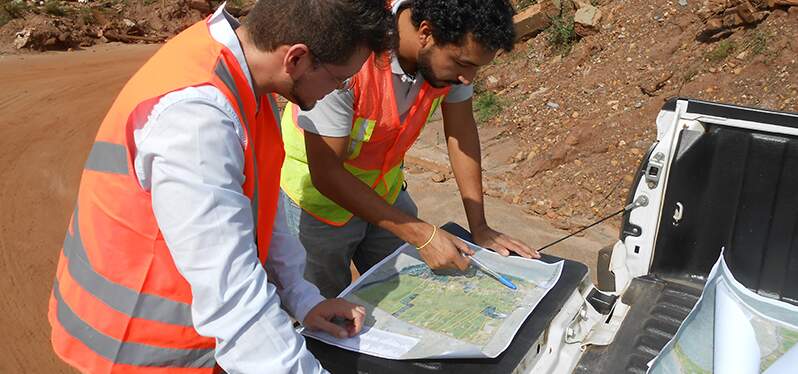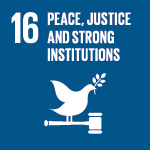Posted in: 04/06/2022
Synergia has been working since 2012 with the preparation of Asset and Economic Loss Assessment Reports for families affected by the activities of companies in the fields of Mining, Steel, Petrochemical Industry, Agribusiness, Infrastructure, among others. Since then, more than 12,000 reports have been produced by the consulting firm.
The reports are a fundamental part of supporting the repair of economic and property damage resulting from the implementation of enterprises and environmental disasters.
Based on the information that supports the necessary criteria and methodologies, the preparation of an appraisal report makes it possible to build a very approximate estimate of the values of the affected assets and the economic losses that may have been caused. This information is used for compensation purposes, aiming at a consistent and fair reparation of damages for the impacted families.
Synergia has in the elaboration of Asset and Economic Loss Evaluation Reports one of the important pillars for its socioeconomic and environmental work.
One of our most relevant cases on the subject, which enables us to understand how the company operates in this type of demand, is associated with the collapse of the Barragem de Fundão (Fundão dam) in the city of Mariana, Minas Gerais, in November 2015.
This was one of the world’s largest dam accidents, which resulted in the release of approximately 39 million cubic meters of iron ore tailings into the Rio Gualaxo do Norte (Gualaxo do Norte River).
Soon, the tailings reached part of the Rio Carmo (Carmo River), more precisely in the municipality of Barra Longa (MG), and, later, the Rio Doce (Doce River)– responsible for the water supply of several municipalities in the states of Minas Gerais and Espírito Santo.
In an emergency action, part of the tailings was dammed in the Barragem de Candonga (Candonga Dam), in the municipality of Rio Doce (MG). However, about 18.9 million m³ of this material went on for 537 kilometers until the mouth of the Rio Doce with the Atlantic Ocean, in Linhares county (ES).

The economic, social and environmental impacts of the accident were immeasurable, affecting the lives of several communities in the vicinity of the rivers affected by the tailings, especially the indigenous and riverine populations.
The preparation of the evaluation reports, in this case, is part of the Fundação Renova Environmental Emergencies Program, created to meet the Termo de Transação e Ajustamento de Conduta (Transaction and Conduct Adjustment Agreement) (TTAC), and which aims to build and act in the repair, indemnity and compensation policies in the area.
After the emergency procedures were carried out, with the evacuation of the population from the affected areas, several other post-disaster actions were started, such as the registration of the population.
The actions that interest us specifically in this article are those related to the registration of the impacted population and the elaboration of the Evaluation Reports of Asset and Economic Losses. But it is possible to check Synergia’s complete actions regarding dam disasters through the article Dam disasters and the new mining framework.
The registries are a fundamental instrument not only for the identification of the affected population and their needs for compensation for material and immaterial losses. They have made it possible to understand the social conditions of the communities, as well as allowing a deeper territorial reading of the socio-environmental impacts.
After the process of registering the families, a technical inspection stage is carried out, which consists in evidencing the losses declared in the previous stage of registration.
This entire on-site technical inspection process strictly follows the Brazilian norm for asset evaluation, NBR 14653 -1, recommended by the Associação Brasileira de Normas Técnicas (Brazilian Association for Technical Norms)(ABNT). In item 3.1.60, the standard provides about General Procedures: “local, face-to-face verification of facts and aspects, through careful observation of a property and the elements and conditions that constitute or influence it”.
During the technical survey stage in communities and areas directly impacted (rural and urban properties), the aim is to identify the characteristics of the property and other factors influencing the assessment: location, access conditions, infrastructure, dimensions, topography, soil type, relief, land use capacity, availability of water resources, among others.

Due to the degree of impact suffered in certain locations, and the residual situation of the improvements, the technical survey stage was restricted. The identification of the construction pattern of some buildings, and even the delimitation of some plots of land, were made impossible by the extent of the impacts.
In cases like these, a methodology is used that considers the memory of the people impacted. The informations given by them, which has the character of self-declaration, are used.
In the the self-declaration procedure, the person manifesting has the right to answer, or not, to any of the information requested during the Socio-Economic Survey. The information must be considered and stored, even if it is invalid or incomplete.
After exchanging opinions and building the methodology to be used, a process carried out in partnership with the client and the communities, the following items are adopted as eligible impacts for valuation:
Other losses and damages, in the case of those impacted by the Fundão dam disaster, are dealt with through other programs of the Fundação Renova (Renova Foundation), such as the Reparation Program.
Among these losses and damages can be cited:
The Economic Damage Assessment for impacts and/or interruptions of economic activities – whether permanent or temporary, partial or total– should ascertain the possible loss of income. In other words, the profits that will no longer (or have no longer) been received as a result of a certain event or undertaking.
When these damages are linked to the commercial chain (considering restaurants, hotels, inns, markets, grocery stores, bakeries etc.), accounting elements are sought for the valuation of the losses. In this case, from the cashflow of the commercial establishment itself, it is possible to define the monetary value of its respective loss, and it is recommended to use the historical series of this flow.
After gathering and analyzing all the information collected during the previous steps, the process of preparing the Appraisal Reports for Asset and Economic Losses begins. These reports have as fundamental steps:
After all the previous steps have been completed and the information has been systematized, the preparation of the Appraisal Reports related to the repair of the associated damages is concluded.
They present the valuation of assessable losses. In other words, they bring the respective amounts to be compensated to the families directly impacted by the event.
They also serve as information grants for certain programs to be defined by the client, in order to repair and compensate for the damage resulting from the disaster.
It is important to point out that the entire appraisal process must be validated by the Brazilian Institute of Engineering Appraisals and Expertise (IBAPE), a technical entity that is active in the development of the activities of professionals in the areas of Engineering and Architecture.

Another important point is related to Synergia’s expertise in data collection and analysis procedures, relying on qualified collaborators and high technology.
An example of this is the use of SIS Research, the information system focused on collecting data in the field, consolidating this information in a database, and the analysis of the material by the teams of specialists in charge.
In the case of the preparation of appraisal reports, this process ends with the use of the data for the loss assessment and helps to provide the information that will be used as a reference for the calculation of compensation.
Synergia is also developing another exclusive technology aimed at ensuring greater speed, security, and savings in the process of preparing asset valuation reports: SIS Laudos.
With it, it will be possible to link the information from SIS Search to a value matrix– value reference base – for the automatic calculation of damage and loss measurement.
The tool will guarantee more practicality, speed, and security to the calculation procedures, automating the process and reducing manual operations, and will enable the cataloging and management of documentation and photographic records.
All these factors will influence the technical evaluation of the engineer involved in the report preparation and the generation of a file that can be formatted and made available for delivery to the client.
Every product developed by Synergia aims to provide elements that support the needs of the communities served and theassertiveness of the information demanded by the client.
In the case of Impact Assessment Reports, providing market and replacement values for property and economic losses that are directly related to the accident is also acting in favor of the community, preserving their rights and restructuring the territory.
Text prepared by Leonardo Maia Freire – Project Coordinator


Sign up and receive our news.